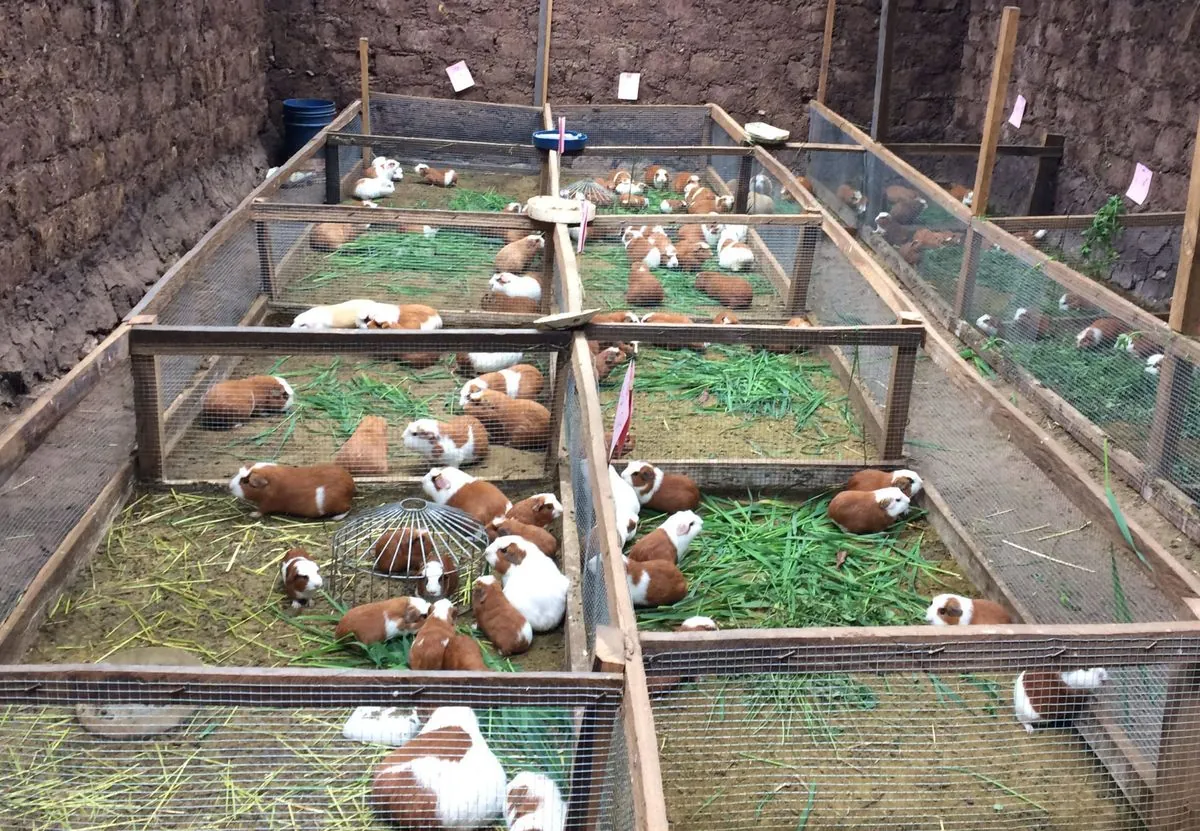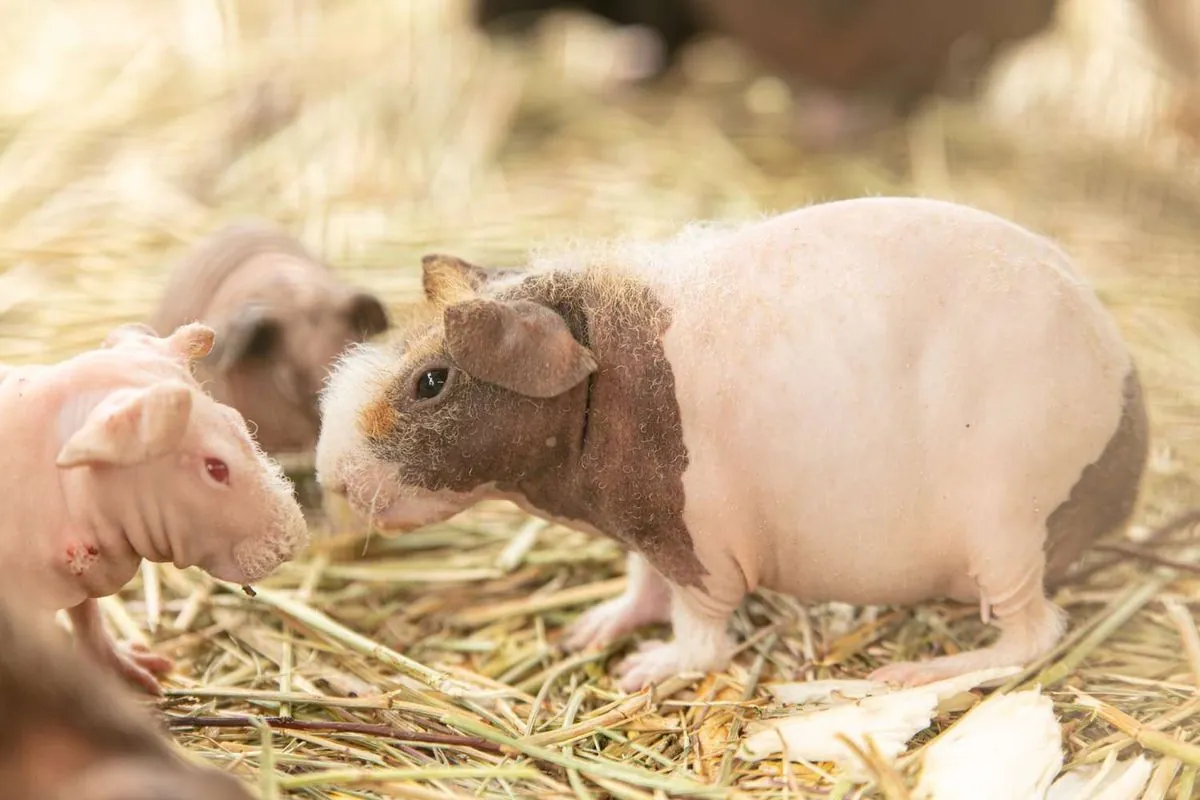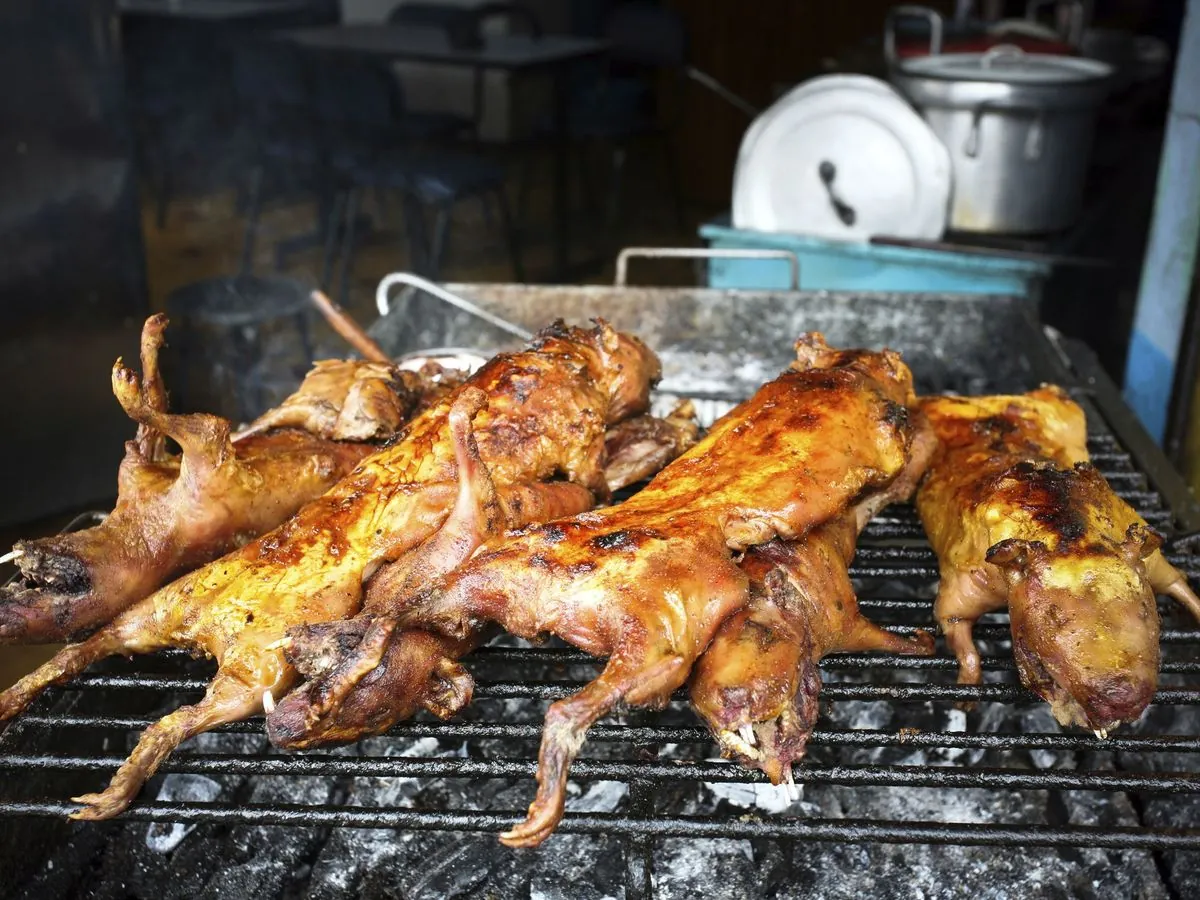Peru Marks 20 Years of Genetically Modified Guinea Pig Breed
Peru celebrates two decades of its genetically modified guinea pig breed, highlighting the rodent's cultural significance and faster growth. The "Peru" breed reaches 1 kg in just 56 days, revolutionizing traditional farming.

Peru is commemorating a significant milestone in its agricultural history: the 20th anniversary of the genetically modified guinea pig breed known as "Peru." This achievement underscores the enduring importance of these rodents in Andean culture and cuisine.
Juan Solórzano, a research zootechnician at the National Institute of Agrarian Innovation, explains the unique characteristics of the "Peru" breed. These guinea pigs, locally called "cuy," reach a weight of 1 kilogram in just 56 days, a dramatic improvement from the previous 160-day growth period. This accelerated development has revolutionized guinea pig farming in the region.

Guinea pigs have been an integral part of Andean life for millennia. Domesticated as early as 5000 BC, these animals have played various roles in Andean societies. The Incas, whose empire flourished approximately 500 years ago, used guinea pigs in religious ceremonies. Today, there are over 25 million guinea pigs in Peru alone, reflecting their continued significance.
The cultural importance of guinea pigs is further emphasized by Peru's National Guinea Pig Day, celebrated on the second Friday of October. This event promotes the consumption and appreciation of these animals. Guinea pigs are not only a food source but also play a role in traditional medicine, being used to diagnose diseases in Andean folk practices.
Marina Isabel Briceño, a native of the Cajamarca region, shares her perspective on guinea pig consumption. She describes it as a delicacy served at special events, such as baptisms, where parents often present godparents with a tray of fried, crispy guinea pigs. This tradition highlights the animal's status as a festive dish.
"I know it is a rodent, a distant relative of rats, but those animals eat garbage, whereas guinea pigs eat something else, tender corn leaves which is why they are tasty"
It's worth noting that guinea pigs are herbivores, primarily consuming plant matter. Their diet contributes to their unique flavor profile, which is appreciated in Peruvian cuisine.
The "Peru" breed's development is part of a broader history of guinea pig research and breeding. There are 13 recognized breeds of guinea pigs by the American Cavy Breeders Association, showcasing the diversity within this species. While guinea pigs are primarily kept as pets in Western countries, their role in South American culture extends beyond companionship.
Guinea pigs are social animals that prefer to live in groups and communicate through various vocalizations and body language. They have poor eyesight but excellent hearing and sense of smell, adaptations that have served them well in their native Andean habitats.
The genetic modification of the "Peru" breed has not altered the fundamental characteristics of guinea pigs. They still require vitamin C in their diet, as they cannot synthesize it themselves. The average lifespan of a domesticated guinea pig remains 4-8 years, and they continue to be prolific breeders, with females capable of giving birth up to 5 times a year.
As Peru celebrates this agricultural achievement, it's clear that guinea pigs will continue to play a significant role in the country's culture, economy, and cuisine for years to come.



































